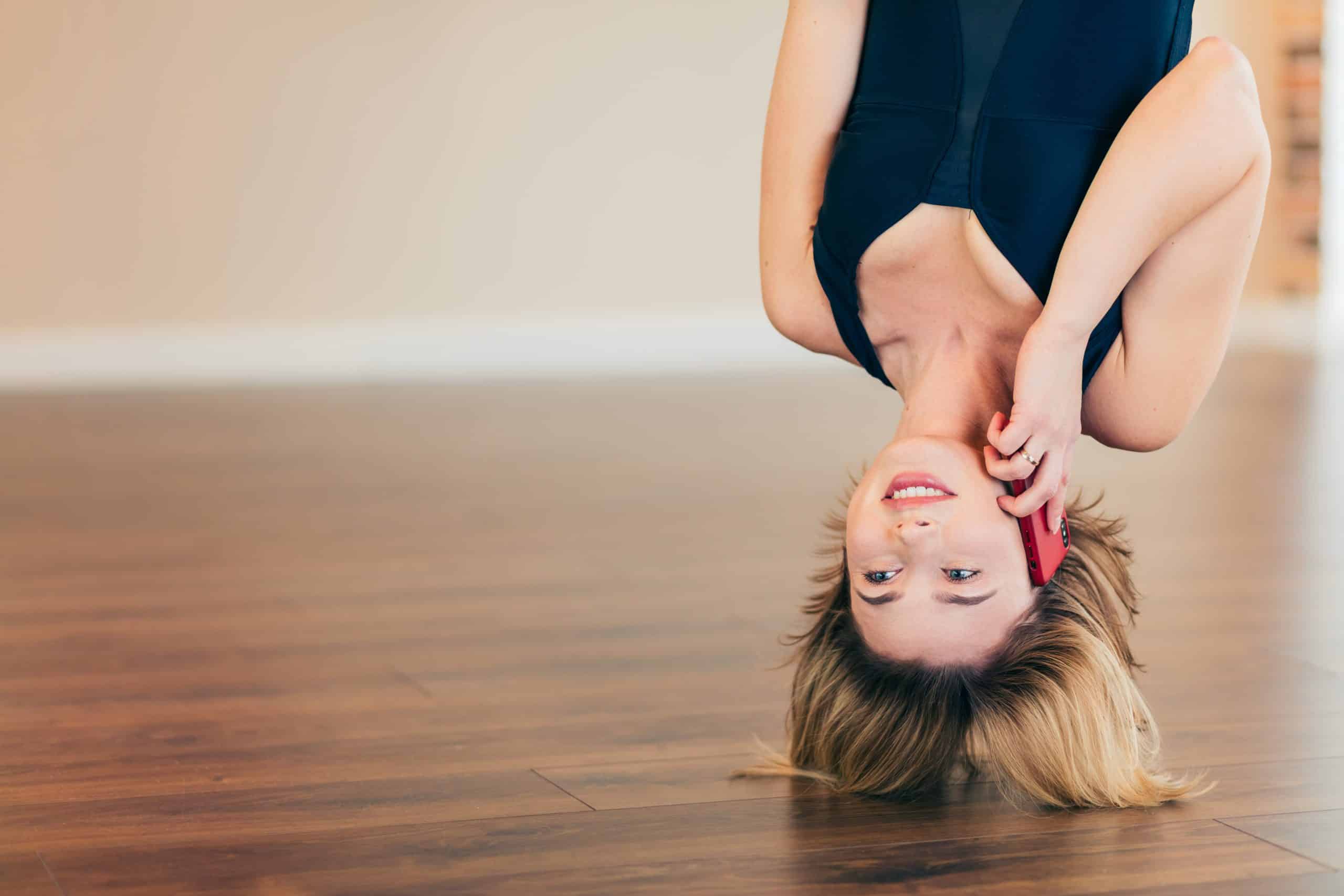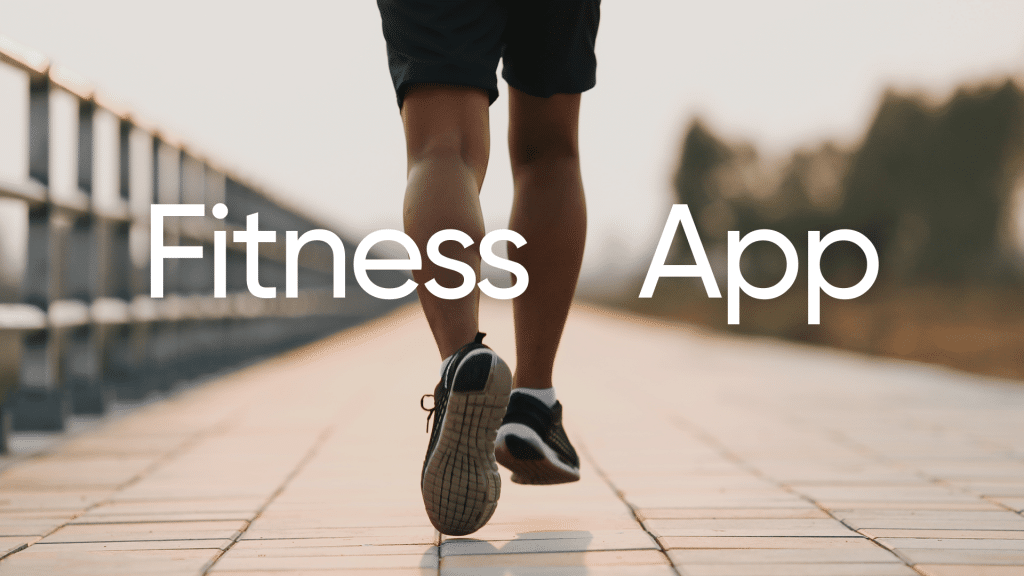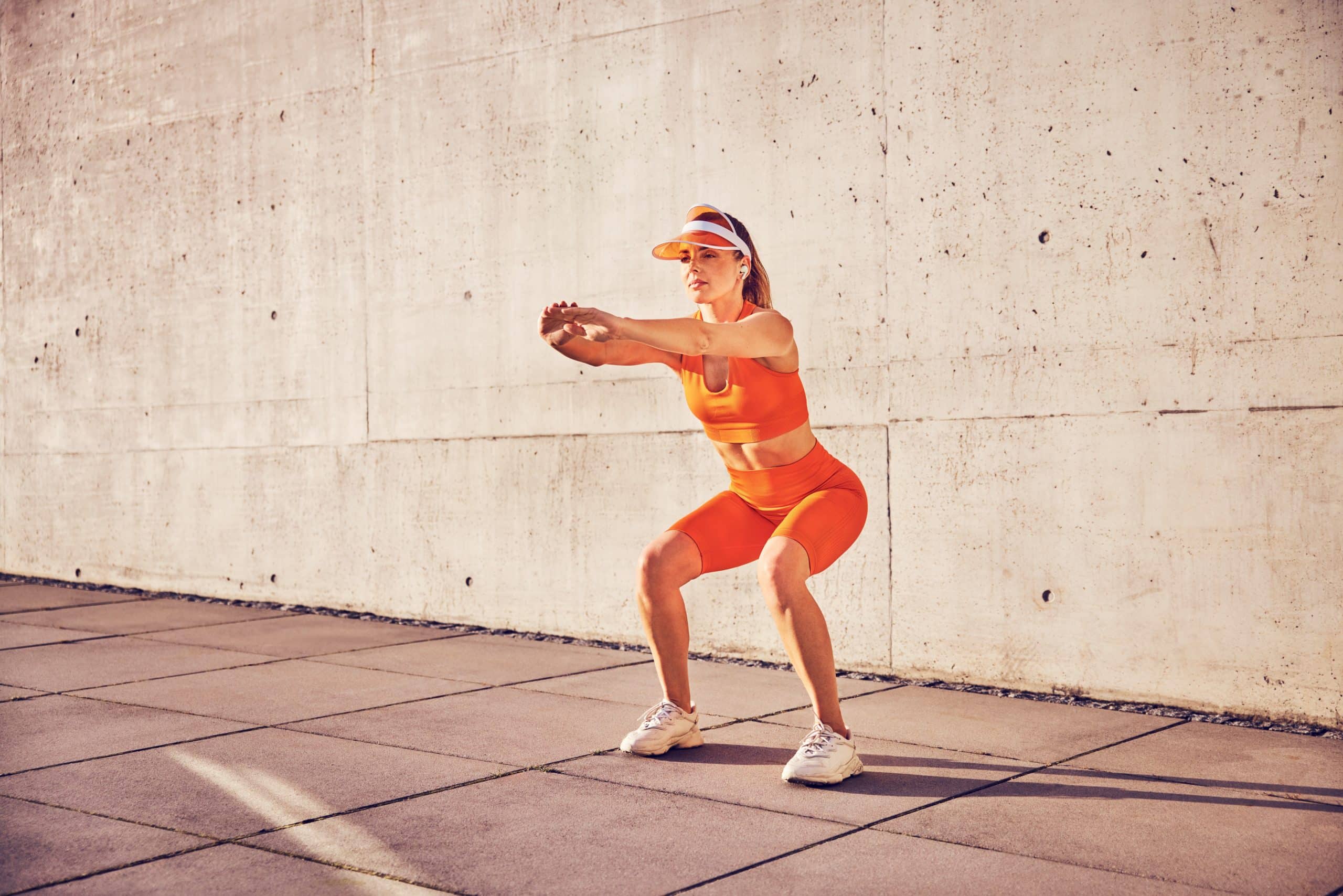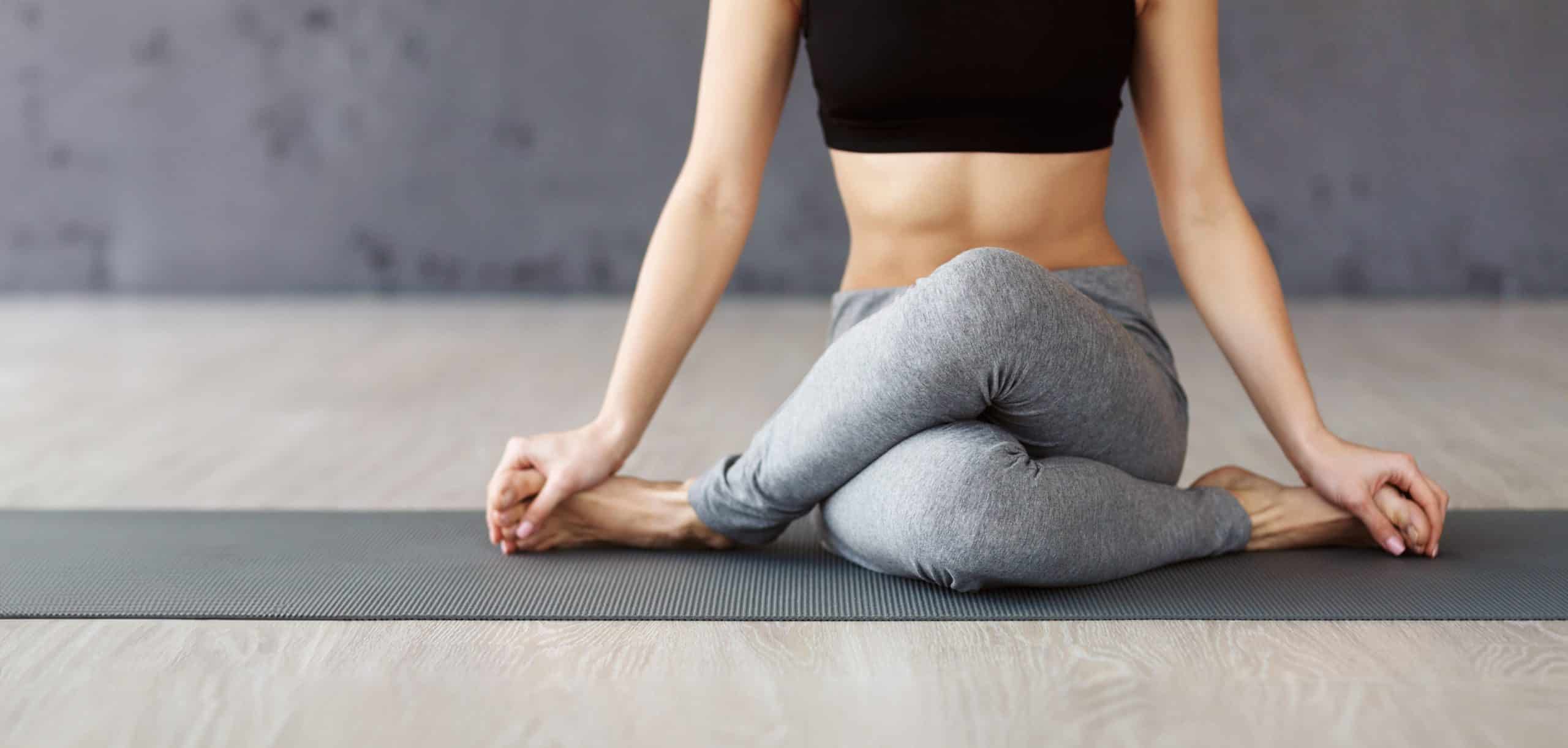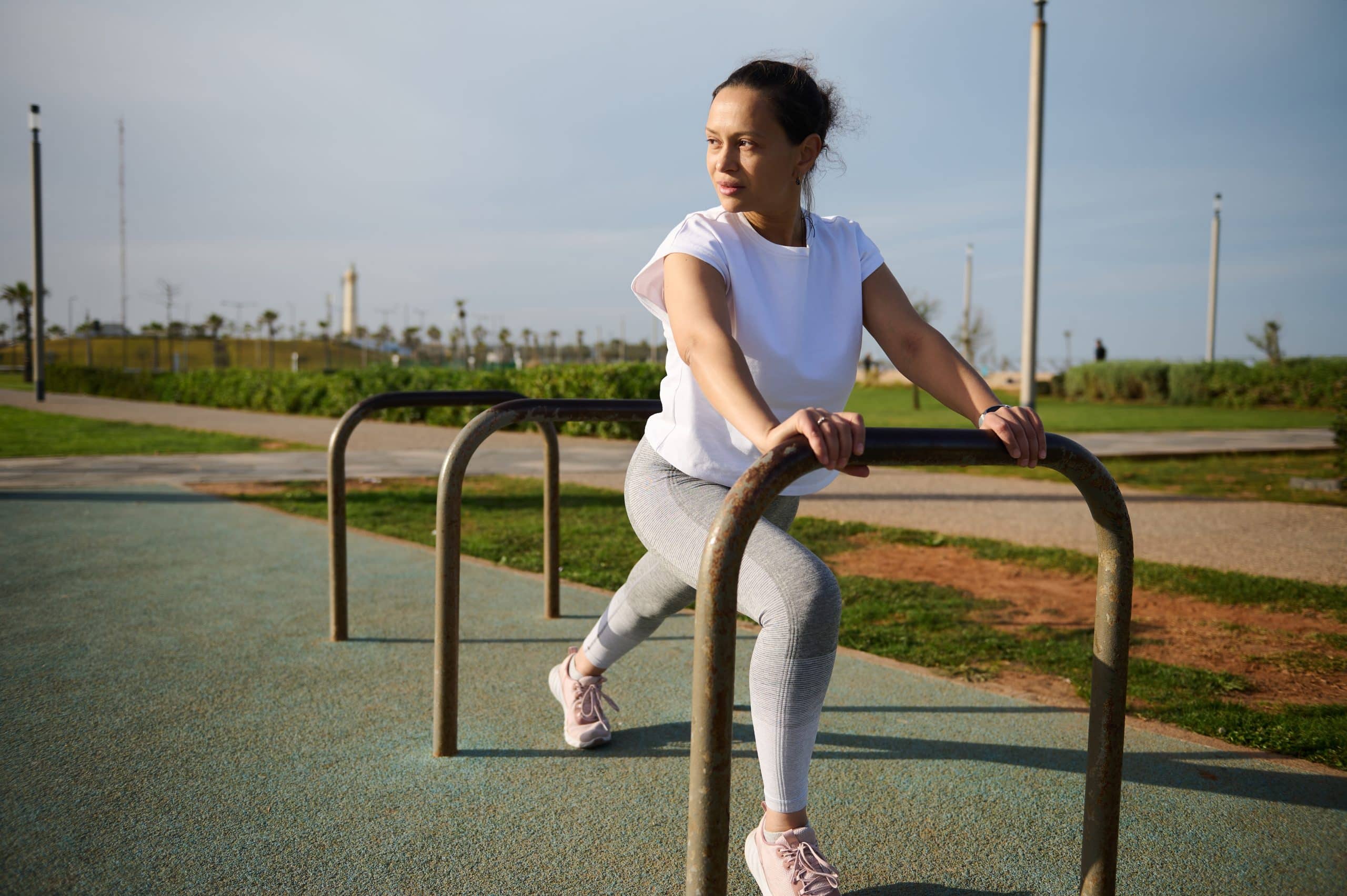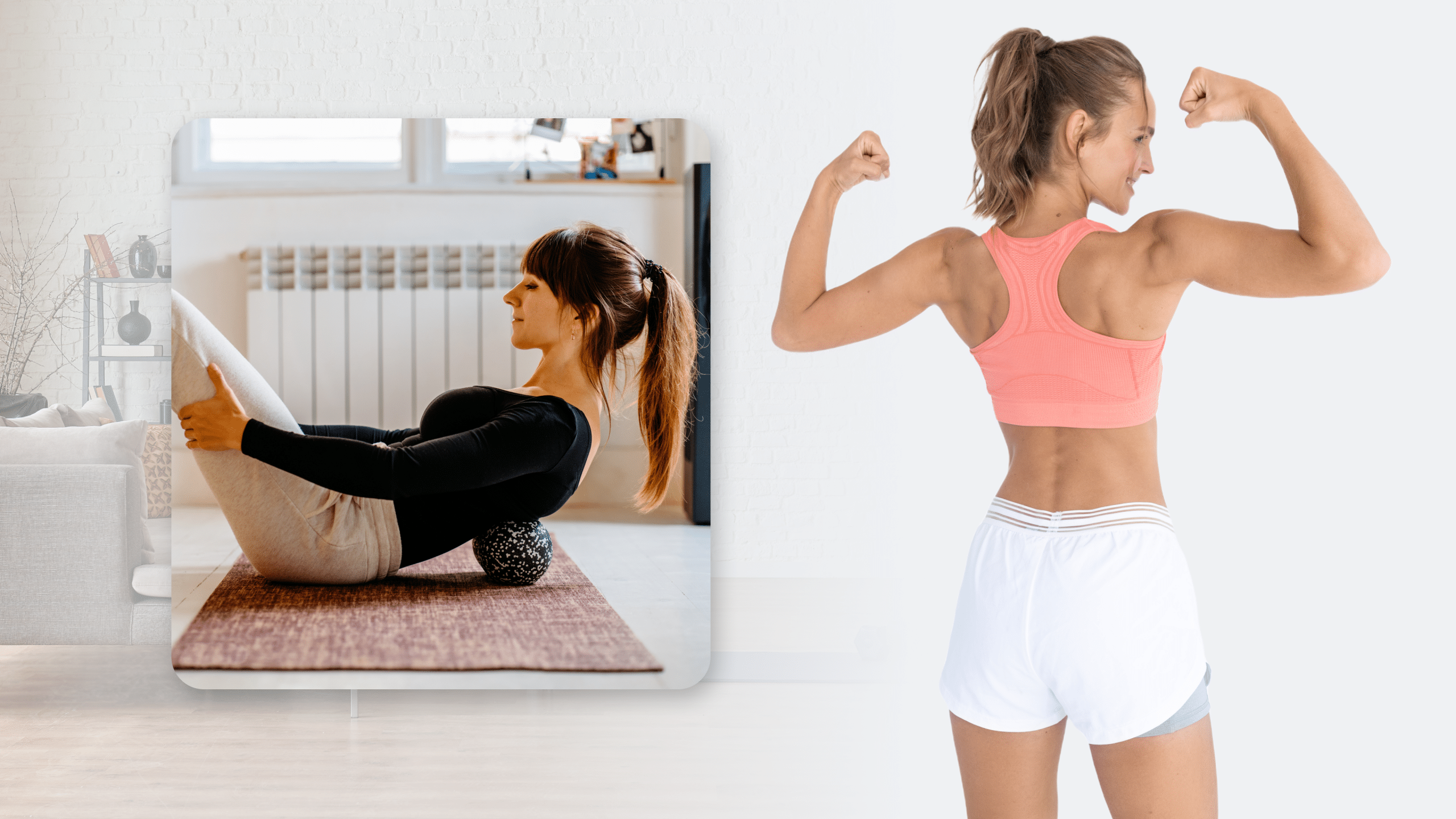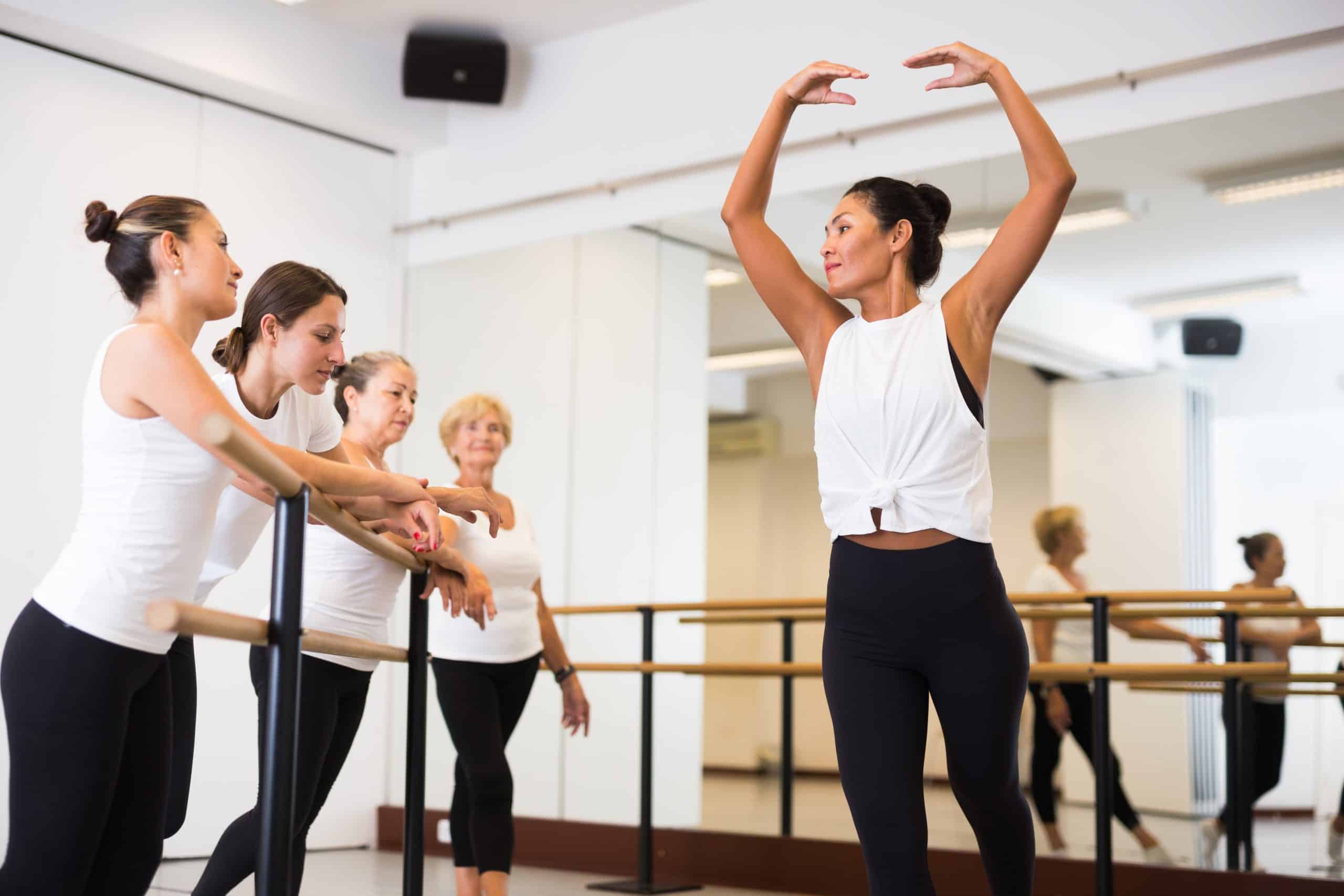You’re certainly not looking into hanging upside down benefits because you miss the monkey bars from childhood. Proponents of this practice, also called inversion therapy, argue that it has a plethora of benefits, from better circulation to temporary relief from back pain (8). Although some health experts agree with these potential upside-down benefits, there are also some risks to be aware of before you attempt any type of inversion. In this article we’ll review some of the potential benefits and risks of hanging upside down, as well as how you can give it a try safely. The goal is to provide you with enough information so that you can make an informed decision about whether or not inversion therapy is right for you.
What Are The Benefits Of Hanging Upside Down?
Inversion therapy was popularized in the West in the 1970s, although it’s been used in Eastern medicine for thousands of years (7).
The theory behind inversion is that by reversing the pull of gravity, you can decompress the spine and take pressure off of the discs and nerves (7). This can lead to reduced back pain and improved mobility.
Recently, alternative health practitioners have started to advocate for inversion therapy as a way to increase blood flow and improve circulation throughout the body.
Some of the purported benefits of hanging upside down include: relief from back pain, reduced tension headaches, decreased stress levels, improved circulation, reduced appearance of varicose veins, and prevention of potential back surgery (8).
Although inversion therapy is gaining popularity, there’s currently a lack of scientific evidence to support most of the claims made about its benefits. That being said, there is some preliminary research that suggests hanging upside down can:
Reduce Lower Back Pain
Chronic lower back pain is a common problem that affects millions of people worldwide (23). It’s often caused by a sedentary lifestyle, poor posture, and repetitive motions (21).
Inversion therapy may help reduce lower back pain by decompressing the spine and improving blood flow to the area.
One small study found that inversion therapy may be effective in reducing lower back pain. The study included 47 people with chronic lower back pain who received inversion therapy in 3-minute sets at different angles (22).
The group that received inversion therapy at 60 degrees experienced the most relief from their symptoms. They also had improved back function and a decrease in disability compared to the other groups.
Improved Spinal Health
Spinal discs act as cushions between the vertebrae in your spine. They can become damaged and deteriorate over time, which can lead to pain, numbness, and weakness (14).
Sitting for long hours, being overweight, and having poor posture are all risk factors for spinal disc degeneration (19).
Inversion therapy may help to improve the health of your spinal discs by reversing the effects of gravity and relieving pressure on the discs.
A small study found that inversion therapy may help reduce the size of herniated discs and relieve symptoms of sciatica (a condition that causes pain in the lower back and legs) (9).
Read More: Side Plank Muscles Worked: Is This Exercise Worth It?
Increased Flexibility
Flexibility is the measure of how far your muscles can stretch and bend to allow a greater range of motion in your joints (6). As we age, our muscles and joints tend to become less flexible, which can lead to pain and reduced mobility.
Inversion therapy may help improve flexibility by lengthening the spine and stretching the muscles and ligaments around the joints.
While there are no specific studies on the effects of inversion therapy on flexibility, one small study found that people who did inversion therapy had improved range of motion in their hips and shoulders compared to those who didn’t do the therapy (8).
Reduced Need For Spinal Surgery
Spinal surgery is a common treatment for chronic back pain, but it’s a major procedure with serious risks and potential complications (20). Inversion therapy may help reduce the need for spinal surgery by decompressing the spine and relieving pressure on the discs and nerves.
A small study found that inversion therapy may help to improve symptoms in people with lumbar disease (12). Lumbar disease is a degenerative condition that affects the lower part of the spine (11).
It’s important to note that spinal problems are complex and often require a combination of treatments. Inversion therapy should not be considered a replacement for spinal surgery. Consult your doctor if you’re considering inversion therapy as a treatment for a spinal condition.
Improved Circulation
Inversion therapy may help improve circulation by reversing the effects of gravity and increasing blood flow to the head and upper body. This can help reduce congestion, sinus pressure, and headaches.
More blood flowing to the brain can also improve cognitive function and increase energy levels.
One study published in the Journal of the Canadian Chiropractic Association found no significant difference in blood pressure and heart rate between people who did and didn’t do inversion therapy (8).
However, the study participants who did inversion therapy had an increase in blood flow to their head and upper body compared to those who didn’t do the therapy.
Looking for a way to break the vicious cycle of weight loss and tone up all the jiggly parts? Watch the extra pounds fly off and your muscles firm up with the BetterMe app!
Risks Of Inversion Therapy
Inversion therapy is generally safe for healthy adults. However, there are some risks associated with the therapy, and it’s not suitable for everyone.
People with high blood pressure, glaucoma, or a history of stroke should not do inversion therapy. The therapy can also be dangerous for people with heart conditions or other health problems (3).
If you have any medical conditions, be sure to consult your doctor before trying inversion therapy.
Pregnant women should not do inversion therapy. The effects of gravity on the fetus are not known and may be dangerous.
Inversion therapy can also cause dizziness, nausea, and headaches in some people. This is usually due to the blood rushing to your head. If you experience these symptoms, stop the therapy and consult your doctor.
If you have any pain, numbness, or tingling in your legs, arms, or hands while doing inversion therapy, stop the therapy immediately and consult your doctor. These symptoms may be a sign of a serious condition called cauda equina syndrome, which can cause permanent paralysis.
It can be dangerous to hang upside down for too long. When blood pools in your head, it can cause a condition called orthostatic hypotension. This is when your blood pressure drops suddenly as you stand up (18).
Symptoms of orthostatic hypotension include dizziness, lightheadedness, and fainting. Staying upside down for hours can be fatal (18).
To avoid these risks, be sure to use an inversion table or other device that is designed for inversion therapy.
Follow the instructions carefully, and do not stay upside down for longer than recommended. If you experience any pain, dizziness, or other symptoms while doing inversion therapy, stop the therapy immediately and consult your doctor.
How Long Should You Hang Upside Down?
Most inversion therapy sessions last for two to five minutes. You can gradually increase the amount of time you spend upside down as your body adjusts to the therapy.
If you’re using an inversion table, be sure to follow the manufacturer’s instructions. Do not stay upside down for longer than recommended.
If you’re not using equipment specifically designed for inversion therapy, there are more risks involved. Do not hang upside down for more than one minute at a time.
Ensure you have enough clearance to hang upside down without hitting your head or anything else. Use a spotter to help you if necessary.
Read More: What Do Lateral Raises Work? How This Exercise Can Benefit Your Workout Routine
Types Of Inversion Therapy Devices
There are many devices you can use for inversion therapy, including:
- Inversion chairs: Inversion chairs have a seat and back support, and they allow you to recline at different angles. Some chairs also have arm supports.
- Inversion tables: Inversion tables are the most common type of device used for inversion therapy. They have a padded table that you strap yourself into, and they allow you to adjust the angle of inversion.
- Inversion boots: Inversion boots are designed to fit over your shoes and let you hang upside down from a bar.
- Inversion swings: Inversion swings look like a hammock or yoga sling, and they allow you to control the amount of inversion.
- Inversion traction devices: Inversion traction devices are designed to decompress your spine by hanging from your feet.
How To Do Inversion Therapy At Home
If you want to try inversion therapy at home, there are a few things you need to do to ensure your safety:
Choose The Right Device
Be sure to use an inversion device that is specifically designed for inversion therapy. Do not use a homemade device, as this can be dangerous.
Read The Instructions Carefully
Before using any inversion device, be sure to read the instructions carefully. This will help you understand how to use the device correctly and avoid any injuries.
Warm-Up First
It’s important to warm up before doing inversion therapy. This will help your body adjust to the therapy and reduce your risk of injury (24).
Do Not Stay Upside Down For Too Long
Be sure to limit the amount of time you spend upside down. Most inversion therapy sessions should last for two to five minutes.
Listen To Your Body
If you experience any pain, dizziness, or other symptoms while doing inversion therapy, stop the therapy immediately and consult your doctor. These could be signs of a serious condition.
Safer Alternatives To Inversion Therapy
If you’re looking for a safer alternative to inversion therapy, there are a few things you can try:
1. Aerial Yoga
Aerial yoga is a type of yoga that is done while suspended in a hammock. This can help decompress your spine and reduce back pain (1). Working with an instructor can help you safely learn how to do aerial yoga.
2. Chiropractic Adjustments
Chiropractic adjustments can also help decompress your spine and relieve back pain. A chiropractor will use gentle pressure and manipulations to realign your spine (4).
If you tend to let yourself off the hook, raise the white flag when things get tougher than you expected, send yourself on an unconscious binge-eating trip – BetterMe app is here to help you leave all of these sabotaging habits in the past!
3. Yoga
Certain yoga asanas, or poses, can help decompress your spine and relieve back pain (5). These include:
- Plow Pose: This pose involves lying on your back and bringing your feet overhead.
- Bridge Pose: This pose involves lying on your back and lifting your hips and back off the ground.
- Spinal Twist Pose: This pose involves sitting on the ground and twisting your torso.
- Headstands: Although they may seem daunting, headstands can be very helpful for back pain. Be sure to practice with an instructor before trying this pose on your own.
4. Massage Therapy
Massage therapy can also help relieve back pain by loosening tight muscles and improving circulation (13).
5. Heat Therapy
Applying heat to the affected area can help relax your muscles and relieve pain (15). You can use a heating pad, hot water bottle, or warm compress for this.
6. Ice Therapy
Applying ice to the affected area can also help reduce inflammation and pain (10). You can use an ice pack, frozen vegetables, or a bag of ice for this.
7. Acupuncture
Acupuncture is a traditional Chinese medicine technique that involves inserting thin needles into the skin. This can help relieve pain by stimulating pressure points in the body (2).
8. Spinal Decompression Therapy
Spinal decompression therapy is a type of mechanical traction that can help stretch and decompress the spine. This can help relieve pain and improve mobility (16).
9. Physical Therapy
Physical therapy involves exercises and stretches that can help strengthen the muscles around your spine and relieve pain (17). A physical therapist can help you create a customized plan to address your specific needs.
The Bottom Line
In conclusion, inversion therapy can offer some benefits, but it also has risks.
Consult your doctor before trying inversion therapy, and be sure to use caution and stop if you experience any pain or other symptoms. Be sure to use proper form and technique when doing the exercises to avoid injury.
DISCLAIMER:
This article is intended for general informational purposes only and does not address individual circumstances. It is not a substitute for professional advice or help and should not be relied on to make decisions of any kind. Any action you take upon the information presented in this article is strictly at your own risk and responsibility!
SOURCES:
- ACE® STUDY EVALUATES HEALTH BENEFITS OF AERIAL YOGA (2016, acefitness.org)
- Acupuncture (2021, ncbi.nlm.nih.gov)
- Changes in cardiovascular function during inversion (1992, pubmed.ncbi.nlm.nih.gov)
- Chiropractic adjustment (2022, mayoclinic.org)
- Exploring the therapeutic effects of yoga and its ability to increase quality of life (2011, ncbi.nlm.nih.gov)
- Flexibility (n.d., physio-pedia.com)
- Inversion Tables: Are They Worth It? (2019,nfpt.com)
- Inversion therapy: a study of physiological effects (1985, ncbi.nlm.nih.gov)
- Inversion therapy in patients with pure single level lumbar discogenic disease: a pilot randomized trial (2012, pubmed.ncbi.nlm.nih.gov)
- Is it time to put traditional cold therapy in rehabilitation of soft-tissue injuries out to pasture? (2021, ncbi.nlm.nih.gov)
- Lumbar Degenerative Disk Disease (2022, ncbi.nlm.nih.gov)
- Lumbar disc disease: the effect of inversion on clinical symptoms and a comparison of the rate of surgery after inversion therapy with the rate of surgery in neurosurgery controls (2021, ncbi.nlm.nih.gov)
- Massage therapies (2001, ncbi.nlm.nih.gov)
- Materials for the Spine: Anatomy, Problems, and Solutions (2018, mdpi.com)
- Mechanisms and efficacy of heat and cold therapies for musculoskeletal injury (2014, tandfonline.com)
- Non-surgical spinal decompression therapy: does the scientific literature support efficacy claims made in the advertising media? (2007, ncbi.nlm.nih.gov)
- Physical therapy (2020, ncbi.nlm.nih.gov)
- Preventing and treating orthostatic hypotension: As easy as A, B, C (2010, ncbi.nlm.nih.gov)
- Risk Factors of Intervertebral Disc Pathology—A Point of View Formerly and Today—A Review (2021, mdpi.com)
- Risk of Complications in Spine Surgery: A Prospective Study – PMC (2015, ncbi.nlm.nih.gov)
- Sedentary Lifestyle and Nonspecific Low Back Pain in Medical Personnel in North-East Poland (2018, hindawi.com)
- The effect of inversion traction on pain sensation, lumbar flexibility and trunk muscles strength in patients with chronic low back pain (2013, semanticscholar.org)
- The Rising Prevalence of Chronic Low Back Pain (2008, ncbi.nlm.nih.gov)
- Warm-up and stretching in the prevention of muscular injury (2007, pubmed.ncbi.nlm.nih.gov)
